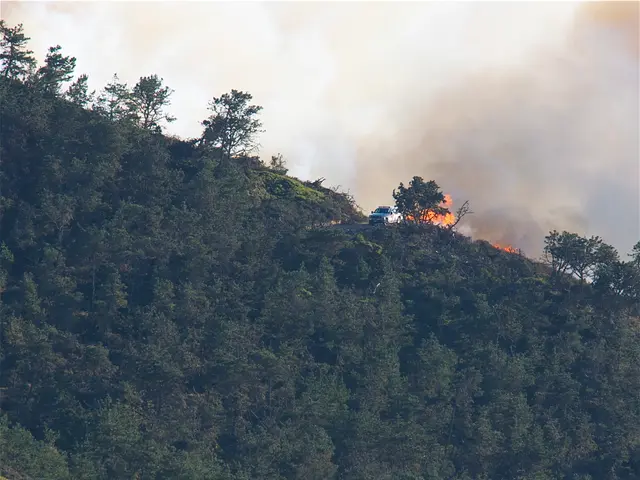Declining Mole Populations: The burrowing threat from extreme weather
Severe weather conditions continue causing the deaths of an increasing number of moles.
With an adorable appearance and a knack for pissing off gardeners, the mole has it rough. Despite protective laws, this burrowing powerhouse struggles against climate change, chemical warfare, concrete jungles, and more. But how many are left?
On May 16, a nationwide participation action kicks off to shed light on the issue.
The mole's tiny frame belies its strength; its body length varies from 13 to 17 centimeters. Moles perceive vibrations, have excellent hearing and smell, and distinguish light from dark [1]. They build their tunnels beneath the surface, covering an area up to 5000 square meters – think a soccer field for scale. Preferring loose, frost-resistant soil, the mole avoids swampy or sandy terrain [2].
A contracting refuge
As more territories become paved and fields are treated with poisons and compacted machinery, the mole's living spaces are dwindling. This shrinking habitat poses multiple problems, as the mole benefits various ecosystems. With populations on the decline, concerns arise.
The mole is protected by the Federal Nature Conservation Act, and gardeners are limited in their pesticide usage. However, numbers remain unclear [2].
Drowning in Despair
Climate change manifests in extreme weather: both drought and floods. Drought causes the upper soil layers to harden, making it hard for the mole to dig shallow tunnels to reach their food sources. Moles must exert more effort, consuming more energy and decreasing their activity levels, increasing mortality risks [2].
On the flip side, heavy rains can lead to flooding, causing the burrow paths to flood and potentially trapping the mole beneath the surface, leading to drowning. Should the mole try to reach the surface, they'd risk becoming prey for foxes or birds of prey [2].
Superior Surveillance
To gain a clearer picture of the mole population, organizations such as NABU, German Wildlife Foundation, and the Leibniz Institute for Zoo and Wildlife Research launched a citizen science project in 2023. Starting May 16, the public is encouraged to report any sightings of moles, hedgehogs, or molehills. This year's action runs until May 26, with plans to continue beyond 2025 [2].
Hibernating Brainpower
In winter, moles save energy by shrinking their brains[3]. Despite this, destructive tactics like using shovels or poison against moles persist. It's essential to remember that moles are carnivores and beneficial predators, controlling pests and aerating soil [2].
To minimize harm, one can gently redistribute molehill soil without damaging the grass, allowing the mole to continue its work undisturbed. If future threats to the mole's population arise, conservation efforts may prove complicated for an animal with such extensive subterranean territory needs and dependence on healthy soil.
References and Additional Insights
[1] Moles have superior vibration-sensing skills and excellent memory, helping them navigate and avoid traps set by humans.
[2] While human activities like urbanization, agriculture, and landscaping contribute to the decline in mole populations, moles remain common and widespread in suitable habitats across Europe.
[3] Other adaptations in moles include their wide, shovel-shaped snout, strong limbs designed for digging, and their ability to slow down their heart rate in cold environments to conserve energy.
[4] European moles are estimated to be widespread across Europe, with localized populations facing threats due to habitat loss and fragmentation.
[5] Climate change impacts on European mole populations are less well-studied compared to other species, but adaptability and burrowing efficiency may help moles survive changes in soil conditions.
[6] European moles play important roles in ecosystems, reducing pest populations and aerating soil, making them valuable components in soil health.
- The declining mole population is a concern as it affects various ecosystems and benefits from the community policy on nature conservation, but the exact numbers remain unclear.
- Science and environmental science have a vital role in studying the impact of climate-change on the mole population, which faces challenges from both extreme drought and floods.
- To support conservation efforts and collect data on mole populations, organizations like NABU, German Wildlife Foundation, and the Leibniz Institute for Zoo and Wildlife Research launched a sports-like, citizen-science project, encouraging public participation.








